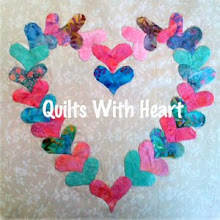



As a member of the EtsyBloggers Street Team, I'm required to participate in the team blog carnival at least once a month. I've been waiting for an easy topic, but the month is almost over so now I'm stuck with the final topic: Tutorial. I'm supposed to teach or demonstrate something that I do. Making quilts is pretty much all I do these days, so I'm doing my tutorial on SCUBA DIVING.
Just kidding. I'm going to show you around my work areas, and tell you a little about my quiltmaking process. There are two things every quilter collects: fabric and quiltmaking books. My creative juices usually start bubbling from one or the other of these sources. Often I fall in love with a particular fabric, and will design a quilt especially to showcase that fabric. I thumb through my quilt books and choose a classic block that seems fitting, and then sort through my stash of fabric (two chests of drawers full) and pull many other fabrics that coordinate or contrast with the featured fabric. This may take an entire day, but I don't mind, since "shopping" from my own stash is about the most fun I can have! I usually make piles of possible combinations (see top photo) and then start narrowing the selections down. For me, this is often the stage that determines the size of my quilt; it may depend on how much fabric I have in the selected grouping, or whether I can still order more if needed.
Next I move to the cutting table (2nd photo). There is some math involved to determine how to cut the fabric, and I humbly confess that this is my least favorite part of quilting. (I definitely should have paid more attention in Algebra class! Sorry, Mr. Vartarian.) On the plus side, specialized rulers and rotary cutters have made cutting fun. When I first learned to quilt I used templates to trace and cut each piece with scissors, like our pioneer sisters did. I can't imagine where they found the time for this, what with churning the butter and feeding the chickens and plowing the fields. Even with my advanced tools, depending on the size of the quilt and the complexity of each block, cutting may take another whole day.
Then, finally, I get to piece the quilt! (3rd photo) I think "piecing" (sewing the patches into blocks and the blocks into rows and the rows into a quilt top) is the part of the process that most quilters love best. This is where we finally get to see how the colors work together. Does the block need more contrast? Is the focal fabric overpowered, or enhanced, by the other fabrics? Now is the time to make changes if needed. My experience has been that if I don't like the total effect at this stage of the game, I'm not going to like it any better later on. Often the change that's needed is a small one, and yet it can make a huge difference in the quilt. Better to bite the bullet now and redo things so you'll be happy with the finished top.
Lastly, it's time to layer and quilt. Many hobby-type quiltmakers pay to have a professional quilt the finished top to the batting and backing fabric. These professionals generally use long-arm, computer-driven quilting machines, and the result is beautiful. Others hand-quilt their tops, which can take many months or even years, but again the result is beautiful. I used to do all of my piecing and quilting by hand, but arthritis and time constraints led me to switch to a "mid-arm" quilting machine on a ten-foot frame. (4th photo) It's not computerized, so I have to hand-guide it, but I enjoy doing that. The results are not as perfect as with a computer-driven machine, but they're still very pretty.
All it really takes to make a quilt is a quilting book, some fabric, and a lot patience. The great thing about quiltmaking is that if you approach the project one step (one piece, one block, one row) at a time, and keep repeating that process, you will end up with a quilt! And it will be warm and beautiful and full of heart -- a true testament to the artist in you.






